
- Homeowners
- Professionals
- Products
- Back
- PlasterBoards
- Metal Framing & Accessories
- Jointing and Finishing
- Gypsum Plasters
- Ceiling Tiles
By material Type
By Category
- Resources
- About
- Careers
- FAQ's
There is no doubt in our minds when we say that an office is more than just a workspace. It is a place where a majority of a working individual's time is spent, where collaborations are formed and professional growth pursued. Naturally, the design of such a space should not only be visually pleasing but also provide convenience and comfort. Which is why, when it comes to designing office spaces, an increasingly occupant-centric approach is being taken into consideration.
Keeping this in mind, there are 5 key parameters that should be accounted for when planning an office space. These parameters impact the psychological and physiological behaviour of the occupants and influence the overall work atmosphere, they are:
While the first 4 factors can be changed as needed over the course of time, acoustics is one parameter that needs to be incorporated from the design stage itself, as it cannot be added later.
Although acoustics is not a new concept, it is often overlooked due to a lack of knowledge and awareness. In fact, the acoustics of an office can make or break a productive work environment. So here are some useful design ideas to help you with better acoustic implementation in offices-
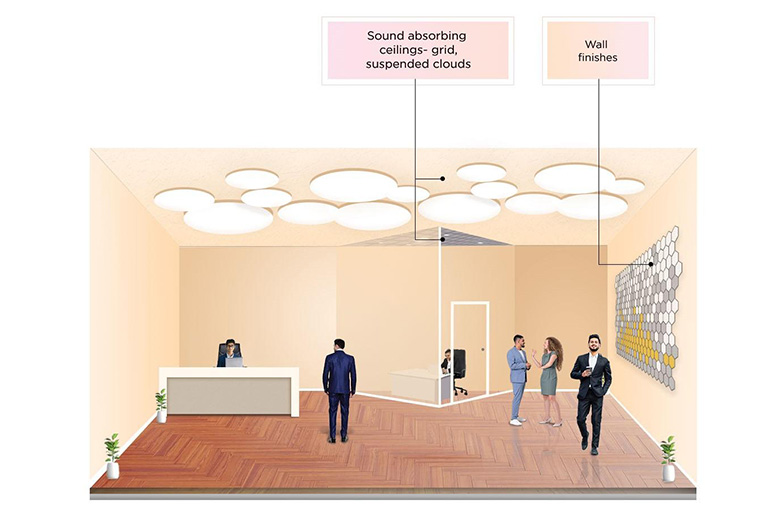
Sound disturbance is a key concern in open areas, especially in professional settings. The noise from colleagues chit chatting, devices or machinery being used and multiple conversations overlapping can add up to cause significant sound disturbance.
These concerns can be addressed by strategic installation of sound absorption elements.
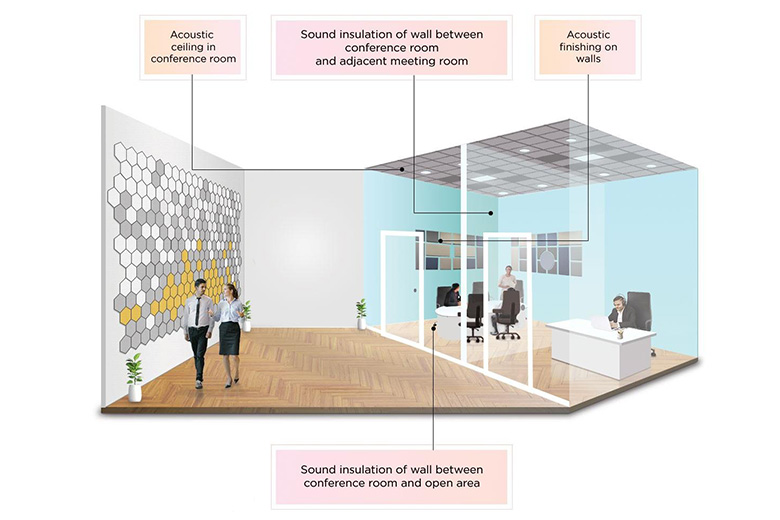
In the case of cabin rooms, it is important to ensure that there is no occurrence of sound leaks, so that loud sounds coming from one cabin do not disturb the occupants of the adjacent rooms.
The acoustics of cabin rooms can be optimised by implementing key elements such as soundproof walls and doors, wall panels to ensure sound absorption and acoustic ceiling to further control the reverb within the room
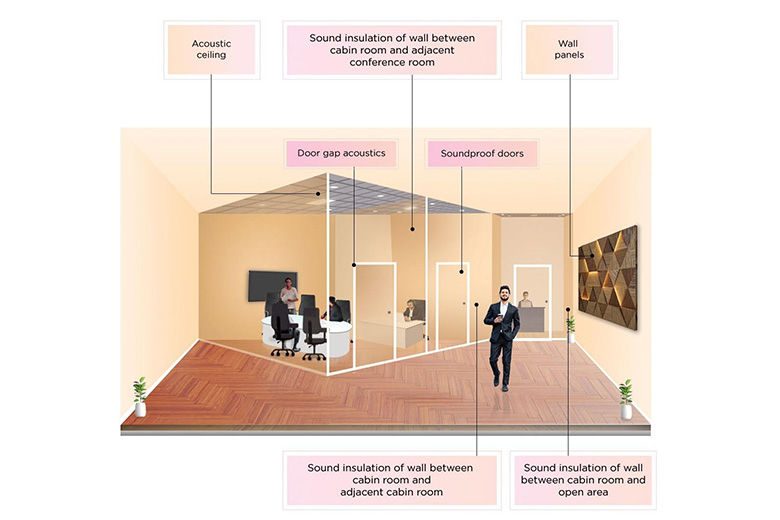
With hybrid work models gaining popularity, you will find a mix of physical as well as digital attendees in meeting spaces. This makes noise reduction and clear acoustics all the more important in conference areas.
Acoustics optimisation in conference rooms allows sound to travel clearly and disturbance-free, which greatly enhances the atmosphere of business meetings.
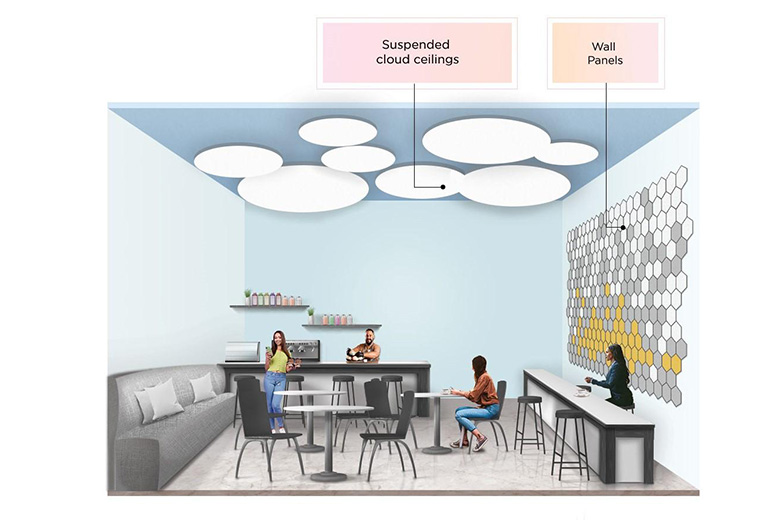
Sound insulation is a measure of how effectively a surface can obstruct sound waves from passing through it
Cafeterias and kitchen areas tend to be busy around the clock. The noise from multiple conversations and clinking cutlery can cause quite the din. In such areas, suspended cloud ceilings and wall panels can help improve sound absorption and reduce the noise levels.

The layout of lobbies and waiting rooms is important in building a good first impression for your company. If these areas face noise issues and sound disturbances, it can impact your company's image. Implementing simple acoustic measures, such as carperted floorings and acoustic ceilings, contributes to creating a pleasant atmosphere in waiting rooms.
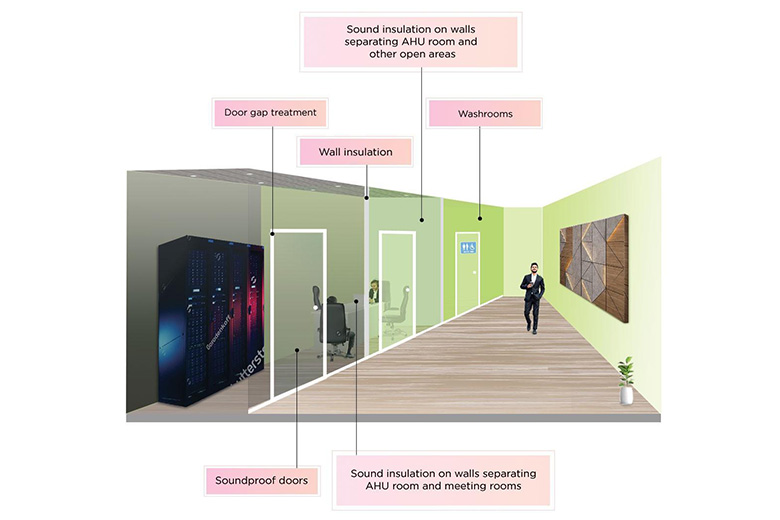
Heavy machinery in AHU and server rooms generate loud sounds which can be unpleasant for the other occupants of the space. The following highlighted measures can make a great difference in the acoustics performance of AHU and server rooms.
Here are some general tips for improving the acoustics of spaces which don't fit into the aforementioned criteria.
So there you have it, we hope that this article has given you some insight into the importance of incorporating acoustics into your office plan and how one can go about it. If you would like to further discuss how acoustics can be implemented seamlessly into your projects, you can contact us at gyprocindia@saint-gobain.com.
More Articles